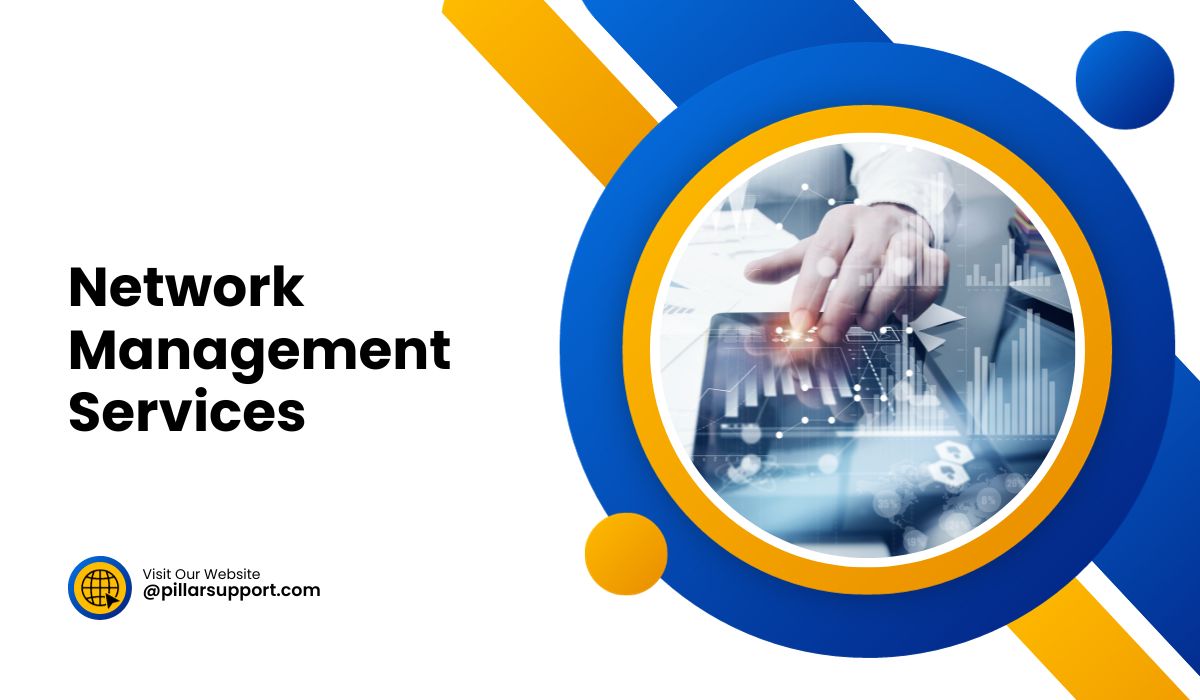Optimizing Networks: The Guide to Network Configuration Management
In the intricate web of modern business operations, the efficiency and reliability of a network are paramount. At the heart of this operational integrity lies network configuration. This entails the meticulous arrangement of hardware, software, and settings that govern how data flows within an organization. Enter Network Configuration Management (NCM), a critical discipline that ensures this setup remains not just functional, but optimal.
NCM is the linchpin of a well-oiled network, orchestrating configurations for devices, applications, and security protocols. It stands as the vanguard, safeguarding against misconfigurations that can lead to disruptions, vulnerabilities, and inefficiencies. In this digital age, where the pace of operations is relentless, NCM is the silent sentinel that upholds seamless connectivity and steadfast performance.
In this journey through Network Configuration Management, we will uncover its pivotal role in maintaining operational efficiency and delve into the tools and techniques that empower organizations to wield it effectively. As businesses navigate the dynamic landscape of technology, NCM remains an indispensable guardian, ensuring networks function at their full potential.
Table of Contents
Understanding Network Configuration Management
Definition and Relevance
Network Configuration Management (NCM) is the systematic process of managing the settings, configurations, and parameters of network devices and systems within an organization. It encompasses tasks such as initial setup, modification, and monitoring of configurations to ensure optimal network performance and security.
In the dynamic realm of modern networking, where the complexity of infrastructures continues to grow, NCM plays a pivotal role. It provides a structured approach to handling configurations, ensuring that all devices and systems operate cohesively and securely. This is particularly critical in environments where multiple devices need to work in harmony, such as routers, switches, firewalls, and servers.
Objectives of NCM
Configuration Standardization
- Objective: Standardization ensures that configurations are uniform across all network devices and systems. This minimizes inconsistencies that can lead to operational issues or security vulnerabilities.
- Benefits: Standardized configurations make it easier to manage and troubleshoot network devices. They also simplify the onboarding process for new devices.
Configuration Control
- Objective: Configuration control involves monitoring and managing changes to network configurations. It ensures that any modifications are authorized, documented, and in compliance with organizational policies.
- Benefits: By maintaining control over configurations, organizations can prevent unauthorized or erroneous changes that could lead to network outages or security breaches.
Network Configuration Management is the cornerstone of a well-maintained and efficient network infrastructure. It provides the framework for maintaining consistency, security, and reliability in network operations. As organizations increasingly rely on their networks for critical operations, the importance of effective NCM becomes even more evident.
Key Components of Network Configuration Management
1. Configuration Backups and Version Control
- Importance: Regular backups and version control are crucial for safeguarding network configurations. They provide a safety net in case of unexpected errors, device failures, or malicious changes. Versioning allows for easy identification and rollback to previous configurations.
- Tools and Best Practices: Utilize configuration management tools like Ansible, Puppet, or Chef to automate backups and versioning. Implement a change management process that includes documentation and labeling of configuration changes.
2. Automated Configuration Deployment
- Benefits: Automated deployment streamlines the process of applying configurations to network devices. It reduces the risk of human error, ensures consistency, and saves time compared to manual deployment methods.
- Tools and Strategies: Tools like Ansible, Puppet, and Cisco’s Prime Infrastructure can automate configuration deployment. Use scripting languages like Python or PowerShell for custom automation scripts tailored to specific network needs.
3. Compliance and Policy Management
- Role of Compliance: Compliance ensures that network configurations adhere to industry standards, regulatory requirements, and internal policies. It helps maintain security, reliability, and operational integrity.
- Tools and Methods: Utilize compliance management platforms like Tripwire or SolarWinds to assess and enforce compliance. Implement regular audits and use configuration validation tools to ensure configurations align with policies.
4. Change Management and Tracking
- Significance of Tracking Changes: Tracking configuration changes is essential for accountability, troubleshooting, and maintaining a clear audit trail. It allows for quick identification of the cause of any network issues that may arise.
- Tools and Practices: Implement a change management system that includes a detailed log of every configuration change, including who made the change and when. Use network monitoring tools like Nagios or PRTG to track configuration changes in real time.
By incorporating these key components into Network Configuration Management, organizations can establish a robust framework for efficiently managing and maintaining their network configurations. This ensures that configurations remain secure, compliant, and optimized for reliable operations.
Benefits of Effective Network Configuration Management
Enhanced Security and Compliance
Effective Network Configuration Management ensures that configurations align with industry standards and internal policies. This helps safeguard the network against security breaches and ensures compliance with regulatory requirements. By adhering to best practices, organizations can maintain a secure and resilient network infrastructure.
Reduced Downtime and Errors
Well-managed configurations reduce the risk of errors that can lead to network outages. By implementing standardized configurations and utilizing automation for deployment, organizations can minimize human error. This results in fewer disruptions to operations and improved overall network reliability.
Improved Scalability and Flexibility
A well-organized Network Configuration Management system allows for seamless scalability. New devices can be easily integrated into the network, and configurations can be deployed efficiently. This enables organizations to adapt to changing business needs and accommodate growth without compromising network performance.
Efficient Troubleshooting and Maintenance
With proper configuration tracking and documentation, troubleshooting becomes more efficient. IT teams can quickly identify and revert to known-good configurations in the event of issues. Additionally, routine maintenance tasks, such as software updates and patches, can be executed smoothly with standardized configurations.
Effective Network Configuration Management is instrumental in ensuring that a network operates reliably, securely, and in compliance with industry standards. It not only minimizes risks associated with misconfigurations but also lays the foundation for a network that can adapt and scale to meet the evolving needs of an organization.
Challenges in Network Configuration Management
Complexity of Network Infrastructures
Challenge
Modern networks can be incredibly complex, comprising various devices, protocols, and technologies. Managing configurations across this intricate landscape can be challenging.
Overcoming
Implement network visualization tools and utilize Configuration Management Databases (CMDBs) to gain a comprehensive view of the network. Leverage automation for consistent and standardized configuration deployment.
Change Management and Tracking
Challenge
Keeping track of configuration changes, especially in environments with multiple administrators, can be difficult. It’s crucial to maintain a clear audit trail.
Overcoming
Implement a robust change management process that includes documentation, version control, and approvals for configuration changes. Utilize configuration management tools to track and log changes.
Ensuring Compliance
Challenge
Adhering to industry regulations and internal policies can be complex, especially as requirements evolve. Ensuring that configurations meet compliance standards is a critical aspect of Network Configuration Management.
Overcoming
Utilize compliance management tools that can automatically assess configurations against relevant standards. Regularly conduct audits and stay informed about regulatory changes that may impact network configurations.
Security Concerns
Challenge
Security vulnerabilities can arise from misconfigurations. Ensuring that configurations are secure and not susceptible to breaches is a constant concern.
Overcoming
Implement security best practices, such as regular security assessments and penetration testing, to identify and rectify vulnerabilities. Utilize encryption, access controls, and other security measures to protect configurations.
Integration of New Technologies
Challenge
Introducing new technologies or devices into an existing network can be challenging. Ensuring that they integrate seamlessly with existing configurations is crucial.
Overcoming
Conduct thorough testing in a controlled environment before deploying new technologies. Use network simulation tools to assess compatibility and performance impact.
By recognizing and addressing these challenges, organizations can establish effective Network Configuration Management practices. This ensures that configurations remain secure, compliant, and optimized for reliable operations, even in the face of evolving network landscapes.
How Pillar Support Elevates Network Configuration Management
At Pillar Support, we bring a wealth of expertise to Network Configuration Management. Our team understands the intricate dynamics of modern network infrastructures and the critical role that well-managed configurations play in ensuring seamless operations.
What sets us apart is our commitment to tailored solutions. We recognize that every organization has unique needs, and one-size-fits-all approaches fall short. Our approach is to work closely with our clients, understanding their specific requirements and challenges. This allows us to craft solutions that are not only effective but also aligned with their business goals.
Whether it’s implementing robust change management processes, ensuring compliance with industry standards, or seamlessly integrating new technologies, Pillar Support has the knowledge and experience to elevate Network Configuration Management to a level of excellence. With us as your partner, you can trust that your network configurations are in capable hands, poised to support your business operations with utmost efficiency and reliability.
What Next!
Ready to experience the difference that streamlined configuration management can make for your business? Partner with Pillar Support and elevate your network operations to new heights.
Our specialized services are tailored to meet your unique needs, ensuring that your configurations are not just managed, but optimized for seamless operations.
Contact us today to take the next step towards a more efficient and reliable network infrastructure.
Frequently Asked Questions
What is Network Configuration Management?
Network Configuration Management (NCM) is the systematic process of managing the settings, configurations, and parameters of network devices and systems within an organization. It encompasses tasks such as initial setup, modification, and monitoring of configurations to ensure optimal network performance and security.
What does NCM Do?
NCM ensures that network configurations align with industry standards, comply with regulatory requirements, and adhere to internal policies. It involves tasks like configuration standardization, control, backups, versioning, and change management. NCM plays a critical role in maintaining a secure, reliable, and efficient network infrastructure.
Why is Configuration Management Important in Networking?
Configuration Management is crucial in networking because it ensures that all network devices and systems operate cohesively and securely. It minimizes the risk of errors, enhances security, and facilitates troubleshooting. Standardized configurations also enable efficient scalability and adaptability to changing business needs.
What are the Five Types of Network Management Processes?
The five types of network management processes are:
1. Fault Management: Detecting, isolating, and rectifying network faults for uninterrupted operations.
2. Configuration Management: Configuring and maintaining network devices.
3. Performance Management: Optimizing network performance for seamless operations.
4. Security Management: Safeguarding network infrastructure against evolving threats.
5. Accounting Management: Tracking network resource usage for billing, auditing, and reporting purposes.



